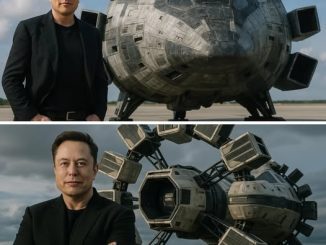
By [Your Name]
When Elon Musk co-founded Tesla Motors in 2003, his goal wasn’t just to make electric cars. It was to revolutionize the auto industry and make electric vehicles (EVs) the standard for the future. While Tesla is now synonymous with mainstream electric vehicles like the Model 3 and Model S, its first major success came from a mass-market sports car—the Tesla Roadster. This early model became the foundation for Tesla’s rise to global prominence, proving to the world that EVs could be both sustainable and thrilling.
The Roadster: A Vision of Speed and Sustainability
In the mid-2000s, when most of the automotive industry viewed electric vehicles as slow and impractical, Elon Musk had a different idea. Electric cars, he believed, could be more than just fuel-efficient sedans or small city cars. They could also be powerful, sleek sports cars that brought the thrill of driving to the eco-conscious. Musk’s vision was to marry the performance of a high-end sports car with the eco-friendly benefits of electric propulsion.
Thus, the Tesla Roadster was born. Introduced in 2008, the Roadster wasn’t just any electric car—it was a game-changer. The car, based on the Lotus Elise chassis, boasted an all-electric range of 245 miles per charge, a groundbreaking feat at the time. But what really set the Roadster apart was its performance: it could accelerate from 0 to 60 mph in under 4 seconds, rivaling many gasoline-powered sports cars in speed and performance. It wasn’t just a novelty for green enthusiasts; it was a performance car that could go toe-to-toe with the best of them.
The Roadster served as proof of concept—demonstrating that electric propulsion didn’t mean sacrificing performance. While the car was limited to a niche market due to its high price tag (around $109,000), it captured the attention of the automotive world and established Tesla as a serious player in the car industry.
From Sports Car to Mass Market
Though the Roadster was a landmark achievement for Tesla, Musk’s vision was always bigger than just a high-performance electric vehicle. He aimed for something more mainstream—to create electric cars that would appeal to the masses, not just sports car enthusiasts or tech-savvy early adopters. In the years following the Roadster’s success, Tesla shifted its focus from niche sports cars to vehicles that could compete in the mass market.
The launch of the Model S in 2012 marked a pivotal moment in Tesla’s evolution. With the Model S, Musk and his team took the Roadster’s core principles—performance, luxury, and sustainability—and applied them to a more affordable and family-friendly sedan. Tesla’s ambition grew exponentially as the company began to prove that electric vehicles could be viable for everyday drivers.
The Legacy of the Roadster
Despite the shift towards mass-market cars, the Roadster remains a cornerstone of Tesla’s success. It was the car that not only proved that electric cars could be fast, but also that they could be luxurious, desirable, and a status symbol. The Roadster garnered attention from car enthusiasts, celebrities, and high-profile investors alike—proving that electric vehicles didn’t have to be boring.
Beyond its performance and design, the Roadster’s true legacy lies in its symbolic role in Tesla’s history. The Roadster laid the groundwork for the company’s future innovations and became the foundation upon which Tesla’s Model 3 and Cybertruck would later be built. Musk’s decision to start with a high-end, high-performance vehicle rather than a basic commuter car proved to be a brilliant strategy, as it allowed Tesla to raise the profile of electric vehicles in a world dominated by gas-powered sports cars and luxury sedans.
In fact, the second-generation Roadster, unveiled in 2017, demonstrates how the sports car’s legacy is far from over. The new Roadster, designed to be even faster and more powerful, can go from 0 to 60 mph in under 1.9 seconds, shattering records for any production car. The fact that Tesla is still investing in sports car technology, even while dominating the electric sedan and SUV markets, shows how important the Roadster remains to the company’s DNA.
Tesla’s Evolution and the Road Ahead
Looking at the current landscape of the EV market, it’s clear that the Tesla Roadster was the catalyst for a seismic shift in how people view electric cars. Today, Tesla’s Model 3 and Model Y have become household names, representing the future of sustainable transportation for millions. Tesla has helped push the global auto industry toward electric vehicles, forcing other manufacturers to pivot toward EV development.
But Tesla’s ambitions don’t stop with sedans and SUVs. Musk’s long-term vision for interplanetary travel through SpaceX and his energy innovations with SolarCity all tie into his belief that the future of transportation isn’t limited to Earth. And yet, the spirit of the Roadster—that desire for thrilling, boundary-pushing performance—is alive and well in the cars Tesla makes today, whether it’s the Cybertruck’s rugged, bold design or the Plaid Model S’s mind-bending acceleration.
Conclusion: The Roadster’s Enduring Impact
Elon Musk’s original idea to create a mass-market electric sports car might have evolved into a much larger, more ambitious mission, but it remains a pivotal moment in the story of Tesla. The Roadster’s impact was felt not just in the automotive industry, but in how we think about sustainability, performance, and technology. It was the first step in a journey that now includes everything from self-driving cars to Mars exploration.
As Tesla continues to grow and innovate, the Roadster remains a symbol of what’s possible when visionary thinking collides with cutting-edge technology. In the end, the Roadster wasn’t just the car that launched Tesla—it was the car that changed the world’s view of what electric vehicles could be.


